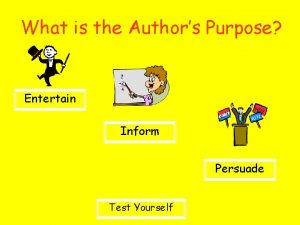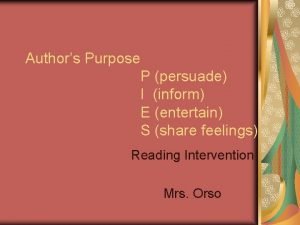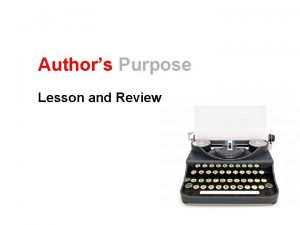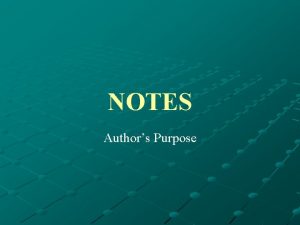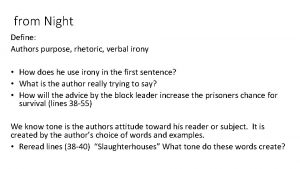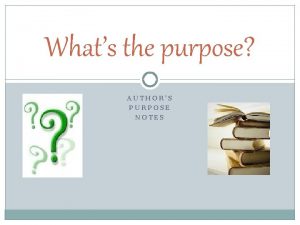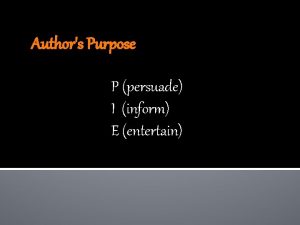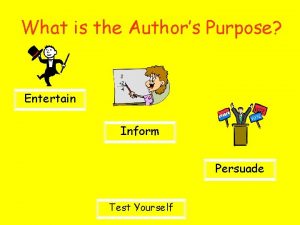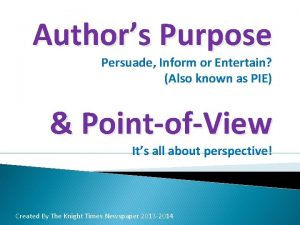Authors Purpose TO INFORM 2 TO ENTERTAIN 3







- Slides: 7

Author’s Purpose TO INFORM 2. TO ENTERTAIN 3. TO PERSUADE 1. SOME SELECTIONS MAY BE A COMBINATION OF TWO OR MORE OF THE ABOVE.

To Inform The author teaches the reader about a particular subject. Ex: Most science textbooks inform the reader. They are not highly entertaining, and they do not try to sway the reader one way or the other.

To Entertain The author provides the reader with an interesting and enjoyable tale or column. Ex: OMG Online or entertainment/gossip magazines entertain the reader by providing details about celebrities’ lives, but the reader doesn’t learn from the articles.

To Persuade The author tries to convince the reader to take one particular side in a debate. Ex: Op-ed columns are submitted to the newspaper by a reader. By name their function is to provide the author’s opinion, or to persuade.

Elements of Fable 1. 2. 3. 4. 5. Short tales Typically humorous The characters are typically animals, plants, or elements of nature that have humanistic qualities (they can talk). The story identifies a particular moral. The story may inform the reader about some aspect of the culture from which it originated.

Myths, Legends, Fables, Fairy Tales 1. Myths are ancient tales that explain some aspect of the culture from which they originate. They may also explain some aspect of nature itself (why crows are black, why skunks have stripes, etc. ). 2. Legends describe the incredible quest of a hero. From legends, the reader learns about the qualities that a culture valued (Hercules=strength, Odysseus=wits).

Myths, Legends, Fables, Fairy Tales Cont. 1. Fables are short stories that teach a moral. 2. Fairy tales are designed specifically for children. They are also used to teach a lesson or to frighten children into not performing an undesirable act or behavior.
